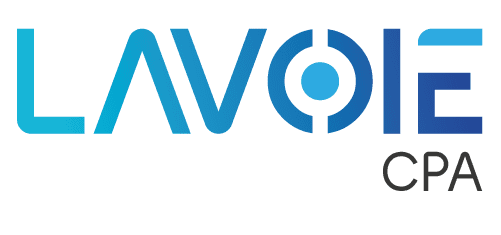
by Sharai Lavoie | Dec 16, 2025 | Uncategorized
When your data is constantly being passed around, everything slows down
In soccer, constantly kicking the ball without a clear play leads to confusion, wasted energy, and missed opportunities. The same thing happens when organizational data gets passed around manually from system to system.
Youth soccer clubs rely on many tools every single day: registration systems, roster trackers, scheduling tools, sponsorship records, donation forms, and financial software. Each one captures an important piece of the club’s activity. But when those systems operate separately, leaders are forced to manually connect the dots.
This creates slow reporting cycles, mismatched numbers, and constant second-guessing. A roster update made today might not appear in financial reports for weeks. A sponsorship adjustment may live in someone’s inbox instead of being reflected in revenue. Refunds, credits, or fundraising totals often require duplicate entry.
When information moves inconsistently, directors spend more time managing data than managing programs. Automatic data feeds replace that chaos with flow.
What connected systems really look like in practice
Strong integration doesn’t mean complex technology or overwhelming setups. It simply means your systems are connected so information moves automatically and consistently.
When systems are connected through automatic data feeds, organizations gain:
- A single, reliable source of truth. Operational activity and financial reporting stay aligned, so leadership never questions which numbers are correct.
- Automatic updates without manual work. Roster changes, fees, sponsorships, and refunds flow through systems without uploads, exports, or re-entry.
- Real-time visibility instead of surprises. Leaders see the financial impact of everyday activity as it happens, not weeks later.
- Cleaner, more consistent data. Automation reduces mismatches, duplicates, and manual errors that create endless cleanup.
- Faster workflows across teams. Coaches, administrators, and finance teams spend less time reconciling data and more time supporting players and families.
- Repeatable processes that scale. As clubs add teams, age groups, programs, or locations, the data flows the same way every time.
When systems speak the same language, the entire organization moves more smoothly.
The hidden cost of disconnected data
Most youth clubs don’t realize how much fragmented data slows them down until the problems compound.
Common issues include:
- Roster counts that don’t align with membership revenue
- Budget reports that require multiple revisions due to missing or duplicated entries
- Sponsorships tracked in emails or spreadsheets instead of financial reporting
- Revenue recognized too early or too late, distorting trends
- Month-end closes that stretch into weeks
- Inconsistent reporting by program, age group, or season
Individually, these seem manageable. Together, they create confusion that makes every financial review harder than it should be.
Why clarity matters more than most clubs expect
Disconnected systems don’t just create extra work. They erode confidence.
When leadership isn’t sure the numbers are accurate, decisions slow down. Planning becomes cautious. Growth feels riskier than it needs to be. Time that should be spent improving programs gets redirected toward validating data.
Automatic data feeds change that dynamic. They create visibility leadership can trust.
Not after cleanup.
Not at month-end.
But in real time.
What clubs can start doing right now
Modernizing how data moves doesn’t require a complete system overhaul. Most clubs can make meaningful progress with a few foundational steps:
- Use consistent naming conventions for programs, teams, and fees
- Reduce manual uploads and repeated data entry
- Align operational activity with financial reporting categories
- Minimize manual touchpoints that introduce delays or inconsistencies
- Define simple rules for how activity translates into financial metrics
- Ensure sponsorships, donations, and events flow directly into revenue reporting
Small improvements add up quickly and dramatically reduce the time teams spend reconciling and correcting data.
Stop chasing the ball. Start controlling the game.
Youth sports clubs are growing faster than ever, but disconnected systems make that growth harder to manage. Connected systems with automatic data feeds give organizations the structure they need to operate smoothly, report accurately, and make decisions with confidence.
Your data shouldn’t slow you down or live in five different places. It should move automatically, stay aligned, and support what comes next.
Start the conversation

by Sharai Lavoie | Dec 11, 2025 | Women Who Lead
From Small-Town Dreams to Healthcare Leadership
For Laurel, the journey into healthcare began in childhood with a special gift. “When I was three years old, I grew up in rural Indiana, a very, very small town, and my grandmother bought me a nurse doll that was my height,” she recalls. This early inspiration stayed with her, despite growing up in an era when women were often told college wasn’t for them—or if they did attend, their choices were limited to nursing or teaching.
Despite these societal limitations, Laurel pursued her passion for healthcare. What makes her story particularly compelling is how she leveraged her nursing background to explore diverse career paths within the healthcare industry. As she explains, “Healthcare, if women take advantage of all of it, has so many venues that you can move in and so many directions… If you like to write, you can write in your career in healthcare. If you like business, you can become a businesswoman in healthcare.”
Learning Through Experience
When asked whether her formal education prepared her for career challenges, Laurel offered an insightful perspective: “My education didn’t prepare me so much for the challenges that you face as a woman in managing a career. My education in the workplace prepared me for the next challenges.”
Her approach to continuous learning reveals a pattern of perseverance. Rather than relying solely on her initial education, Laurel consistently sought opportunities to expand her expertise, often through certificate programs and specialized training. “I think that becoming an expert in anything that you can… it gives you that little bit of edge and it sets you up as an expert even if you hadn’t worked in that area for a long, long time.”
Mentorship and Finding Your Voice
A pivotal element in Laurel’s career was finding a mentor who championed her growth. She spoke emotionally about an executive who recruited her early in her career and remained a guiding influence for years. “He was way ahead of his time in terms of the kinds of cultures that you really need to build to have an organization thrive. He really taught me so much about leadership and kind leadership.”
This mentorship was particularly valuable as Laurel often found herself the only woman in executive meetings. “When I sat at a table that he was CEO of, I was the only woman in the whole room for many years. I had to learn how to navigate that and how to make my voice heard, and he helped with that.”
Using Humor to Navigate Challenges
One of Laurel’s most memorable strategies for addressing gender disparities involved using humor. She shared a story about attending a Christmas meeting where the chairman distributed musical ties to all the male executives but gave her nothing. Rather than confronting the situation directly, she purchased musical socks and revealed them at the next meeting.
“I got up to get a glass of water and I tapped my socks when I got up to do so. My socks were playing music and the room got really quiet and then they started laughing,” she recalls. “Later he came to my office and he apologized and said, ‘Your message is very well taken. Thank you.'”
This approach exemplifies her belief that “sometimes you have to find humorous ways to make your message. Once you can do it humorously, they get it and then they change.”
Standing Up for Yourself
Not all challenges could be resolved with humor. Laurel shared a difficult period when she worked under a leader she described as narcissistic and mean. Despite her initial determination to endure the situation for two years, she ultimately recognized the negative impact on her mental health.
“I resigned not knowing what I was going to do next,” she explains. “What I learned from that is no one should take abuse in the workplace, any kind of abuse. It’s not good for your mental health. It’s certainly not going to be good for your career.”
This decision reflects one of Laurel’s core beliefs about perseverance: sometimes protecting yourself is the most important step you can take. “I think the best thing about overcoming those obstacles is sometimes you have to put yourself first regardless of what the outcome’s going to be because you’ll be okay if you put yourself first.”
Sharing Knowledge Through Writing
Today, Laurel channels her experiences into writing books designed to help others navigate their own challenges. Her three books cover diverse topics: remote nursing careers, navigating political grief, and embracing failure as a learning tool.
Her most recent work, “The Art of Failing Spectacularly,” reflects her philosophy that setbacks are valuable growth opportunities. “One of the things that I’ve learned in my career, sometimes the hard way, it’s okay to fail and sometimes it’s good to fail because you learn a lot from those failures. As long as you learn, failing is fine.”
Message to Her Younger Self
When asked what message she would send to her younger self, Laurel emphasized the importance of rejecting limitations imposed by others: “Don’t believe things that people tell you like women shouldn’t go to college, or all you can do is nurse. Don’t limit yourself in terms of what others’ beliefs are and what other people say.”
She reflects that following her passion for writing earlier might have led to a different but equally fulfilling career path. “I think you do limit yourself, particularly women, by the things that other people say or by things even your parents might say inadvertently.”
Inspiring the Next Generation
Through her books, mentorship, and example, Laurel hopes to inspire future generations of women in healthcare. Her approach emphasizes the power of individual connections: “If you inspire one person who inspires another person who inspires another person, that’s the way to go. You can inspire in a big way, but you can also inspire in a small way that becomes a big way.”
As part of our Women Who Lead Healthcare 2024 campaign, Laurel Fuqua’s story exemplifies how perseverance, adaptability, and self-advocacy can lead to a meaningful and multifaceted career in healthcare. Her journey from a small-town girl with a nurse doll to a healthcare executive, author, and mentor demonstrates that by challenging limitations and remaining open to continuous learning, women can forge their own paths to success and fulfillment.

by Sharai Lavoie | Dec 11, 2025 | Women Who Lead
Finding Her Passion in Women’s Health
Dr. Nora Arronte has spent nearly two decades at Novant Providence OBGYN, where she’s built a thriving practice focused on women’s health. While many assume she always knew this was her path, Dr. Arronte actually entered medical school with different plans.
“I actually didn’t know I was passionate about women’s health until going through medical school. I went to medical school thinking that I wanted to be a pediatrician,” she shares. It wasn’t until her third year of medical school during her gynecology rotation that everything changed.
“I’d never been exposed to OBGYN… and just fell in love with the women’s health side of it. Just the fact that I could concentrate on taking good care of women,” Dr. Arronte recalls. “I enjoyed the fact that it was a good combination of primary care for these women patients as well as surgical care.”
Building Meaningful Connections Through Medicine
After 18 years in practice, Dr. Arronte has witnessed the profound impact of continuity of care in women’s health. One of the most rewarding aspects of her career has been building lasting relationships with her patients.
“It’s almost like kind of being part of their family, and it’s been really neat to see them grow as families and grow as moms,” she explains. “I’m at the point, which is very humbling, but I’m at the point in my career where I’m starting to see some of the teenage girls I originally delivered 18 years ago.”
Dr. Arronte’s Cuban background has also created special connections with her Latina patients, many of whom are immigrants themselves. “That population has just been amazing… many of them are just so grateful for care.”
Family Values That Shaped a Medical Career
Dr. Arronte’s perseverance is deeply rooted in her family’s immigrant experience. Her mother left Cuba as a 12-year-old just before Castro took office, while her father departed after living under the communist regime.
“My parents just always instilled, made it a point to underscore the fact that they left everything behind, came to a country that they didn’t know… and they just kind of worked hard,” Dr. Arronte shares. “Their motto was always like it’s about the future generation.”
These values shaped her approach to medicine: “I think my parents are probably what instilled in me just that desire to work hard, to do good at what I do, to do everything with a lot of passion and love.”
Overcoming Doubt on Her Professional Journey
When asked about facing doubt or opposition in her career, Dr. Arronte shared a surprising personal story about her mother’s reaction when she completed her residency.
“My mom has always been very supportive of my career. But I remember when I finished residency, getting ready to start my career here, and my mom made a comment, ‘You actually did it,'” she recalls. “As if she doubted that I was going to follow through and do this.”
This moment of doubt from someone so close to her became a personal obstacle that Dr. Arronte had to overcome. “I’ve known that I wanted to be a doctor since I like, as early as I can remember. I probably like nine or 10… I always said that that’s what I wanted to be.”
Despite this unexpected challenge, Dr. Arronte persevered. “I’ve been really blessed in my career. I’ve had good support at work. I’ve surrounded myself with great colleagues. It’s like a family essentially.”
Finding Balance Through Passion Projects
Like many healthcare professionals, Dr. Arronte has faced the ongoing challenge of balancing her demanding career with personal life. As a mother to a teenager, she’s developed strategies to maintain this balance.
“When I’m home, I try to be home,” she explains. “I do the majority of my work at work, and it might bring me home late at times, but when I’m home, I completely disconnect.”
She also emphasizes the importance of finding joy outside of medicine: “I try to find things that I’m passionate about outside of my field… we love to travel. I love to bake. And so I try to bake when I’m free. I just find things that are not related to my field that make me happy.”
Her current baking passion? “Sourdough bread is right now my main thing. I’ve kept the sourdough starter now for almost a year, and it is really like another kid, but it’s really fun.”
Strong Role Models Shape a Strong Leader
Dr. Arronte credits several key figures as inspirations throughout her life and career. Her grandmother exemplified perseverance by pursuing nursing education at age 50 after raising her family.
“She decided to go back, get her undergraduate degree, get her postgraduate, and then apply to nursing school, and she became a nurse,” Dr. Arronte shares proudly.
In her professional development, mentors like Dr. Laurel Rice, whom she describes as “a powerhouse,” showed her how to balance medical excellence with compassion and family life. “She just really concentrated on her profession, but was also an incredible mom. She was all about the patients.”
Advocating for Women’s Health and Rights
As she continues her career, Dr. Arronte sees her role extending beyond clinical care to advocacy, especially for her immigrant patients.
“With everything that’s been going on politically, and again, I have a large population of immigrants, Latinas, just kind of continuing to offer the best care when they come to see me,” she explains.
She recognizes the multifaceted nature of her work: “I wear many hats, and one of those hats is just kind of those therapists, kind of sitting there and listening to them about what their fears are and what they’re encountering at this point.”
Dr. Arronte is also committed to standing up for women’s healthcare rights: “There’s been a lot of controversy around terminations and women’s contraceptive rights, and just always trying to stay at the front of that and trying to advocate for our patients.”
Words of Wisdom for Future Healthcare Leaders
If she could send a message to her younger self, Dr. Arronte would offer reassurance: “I would tell her not to worry too much, that it’s going to be okay. Like that, you’re going to end up where you need to end up, and it’s going to be great, and you’re going to impact a lot of people.”
For those following a similar path who might face obstacles, her advice is simple but powerful: “You have to find what your passion is, and then you have to do it well. And if you can do that and make a career out of it, that’s phenomenal.”
She adds, “You always have to approach things with a lot of love because otherwise, you’re not going to do a good job, and you’re not going to serve where you need to serve.”

by Sharai Lavoie | Dec 5, 2025 | Federally Qualified Health Centers
Budgeting and forecasting in a Federally Qualified Health Center (FQHC) can feel unpredictable when financial decisions rely on incomplete or delayed information. Many leadership teams build budgets based on historical numbers alone, without fully accounting for changing encounter patterns, payer behavior, staffing needs, or service line growth. The result is a budget that looks accurate on paper but struggles to match reality.
Operational integration solves that. When financial planning incorporates real activity, encounters, visits, payer mix shifts, and utilization trends, budgets become more precise, forecasts become more reliable, and leadership gains the clarity needed to plan sustainably.
This strategic playbook outlines how FQHCs can strengthen their budgeting and forecasting through better data alignment.
1. Start With Operational Reality, Not Historical Data
Historical numbers matter, but they’re not enough. Relying solely on last year’s data makes planning reactive instead of forward-looking. Integrated systems allow leaders to pull in real-time metrics such as:
- Encounter volume by clinic or service line
- Payer distribution changes
- Patient demand patterns
- Staffing utilization levels
When budgets are grounded in current operational behavior, financial expectations become more realistic and better aligned with the organization’s mission.
2. Build Forecasts Around What’s Changing, Not What Stayed the Same
Forecasting is most valuable when it adapts to movement, not stability. FQHCs often see fluctuations in patient demand, seasonal trends, and payer performance. With integrated data, leadership can model different scenarios based on:
- Increases or decreases in encounter volume
- Shifts in payer mix
- Expected reimbursement timing
- New programs or expanded service lines
Scenario planning becomes smarter and more proactive, giving leaders the ability to anticipate strain before it occurs.
3. Connect Clinical Strategies to Financial Outcomes
Every clinical decision has financial implications. Extending clinic hours, launching new programs, or reallocating staff all influence both encounter volume and cash flow.
When budgets reflect these operational realities, leaders can:
- Understand the true cost of expansion
- Evaluate ROI of new service lines
- Plan staffing more efficiently
- Anticipate supply and equipment needs
Financial planning becomes a collaborative process between clinical and financial leadership, strengthening alignment and reducing surprises.
4. Use Technology to Maintain Accuracy Through the Year
Budgets shouldn’t sit in a drawer until next year. With cloud-based systems like Sage Intacct, FQHCs can compare actual performance to budget in real time, updating forecasts as conditions evolve.
This continuous monitoring allows leaders to make adjustments early, protecting financial stability and supporting long-term growth.
5. Turn Insight Into Strategic Action
Integrated planning creates visibility that goes beyond numbers. Leaders can see how today’s operational activity drives tomorrow’s financial results. This level of clarity supports smarter decisions about expansion, staffing, grant utilization, and service delivery.
When budgets and forecasts reflect real organizational behavior, they become tools for growth instead of constraints.
Start the Conversation
At Lavoie CPA, we help FQHCs align operational data with financial planning to create budgets and forecasts that truly reflect organizational needs. If your health center is ready to strengthen financial performance through smarter integration. Start the conversation today.

by Sharai Lavoie | Dec 5, 2025 | Federally Qualified Health Centers
For Federally Qualified Health Centers (FQHCs), financial strain rarely comes from a single issue, it emerges when information is scattered, delayed, or incomplete. Leadership can see revenue totals but not the encounter patterns underneath. They can monitor cash balance but not how payer behavior will influence it next month.
Without a unified view of encounters, payer mix, and cash flow, leaders are left reacting to challenges instead of anticipating them. Integrating operational and financial data changes that completely. When encounters, payer data, and revenue are tied directly to financial reporting, visibility becomes a strategic advantage, not just a compliance requirement.
Encounter Data: The First Indicator of Financial Health
Encounters are the operational heartbeat of an FQHC. They drive revenue, staffing needs, payer distribution, and even clinic hours. Yet many finance teams don’t see encounter data until month-end reporting, or only in aggregate form.
This gap hides essential insights:
- Which clinics are experiencing higher demand?
- Which encounter types are rising or slowing?
- Are specific services underperforming or over-utilized?
Connecting encounter data to financial dashboards allows leadership to identify operational trends early and align staffing, scheduling, and supply decisions accordingly.
Payer Mix: The Story Behind the Numbers
A stable payer mix improves predictability. A shifting payer mix changes everything. But without real-time visibility, leadership may not realize that a rise in uninsured patients or a decrease in Medicaid encounters is impacting revenue until the cash flow shortfall appears weeks or months later.
When payer mix is connected to encounter volumes and financial reports, leaders can:
- Understand how each payer contributes to cash flow
- Anticipate delays based on reimbursement timing
- Evaluate contract performance
- Adjust budgets before shortfalls occur
This insight is what prevents small fluctuations from turning into financial strain.
Cash Flow: The Outcome of Operational Behavior
Cash flow isn’t just a financial indicator, it’s the summary of everything happening operationally. When encounter patterns shift or payer behavior changes, cash flow reacts.
Integrating operational data with cash flow projections gives leadership the ability to forecast more accurately and respond quickly.
For example:
- A drop in encounters today signals lower cash flows next month.
- A shift toward slower-paying payers impacts liquidity immediately.
- A growing service line may require additional resources to maintain performance.
Visibility transforms cash flow from a reactive metric into a forward-looking management tool.
Unified Visibility: The Advantage FQHCs Need
When encounters, payer mix, and cash flow appear on one dashboard, decision-making becomes clearer and faster. Leaders can see how operational changes influence financial results and adjust mid-cycle, not after the fact.
This unified visibility helps FQHCs:
- Strengthen budgeting
- Improve financial stability
- Reduce surprise shortages
- Support long-term growth planning
Integrating these datasets isn’t just helpful, it’s essential for sustainability.
Start the Conversation
At Lavoie CPA, we help FQHCs connect financial and operational data to make confident, proactive decisions. If your organization is ready for clearer visibility and stronger financial performance. Start the conversation today.





